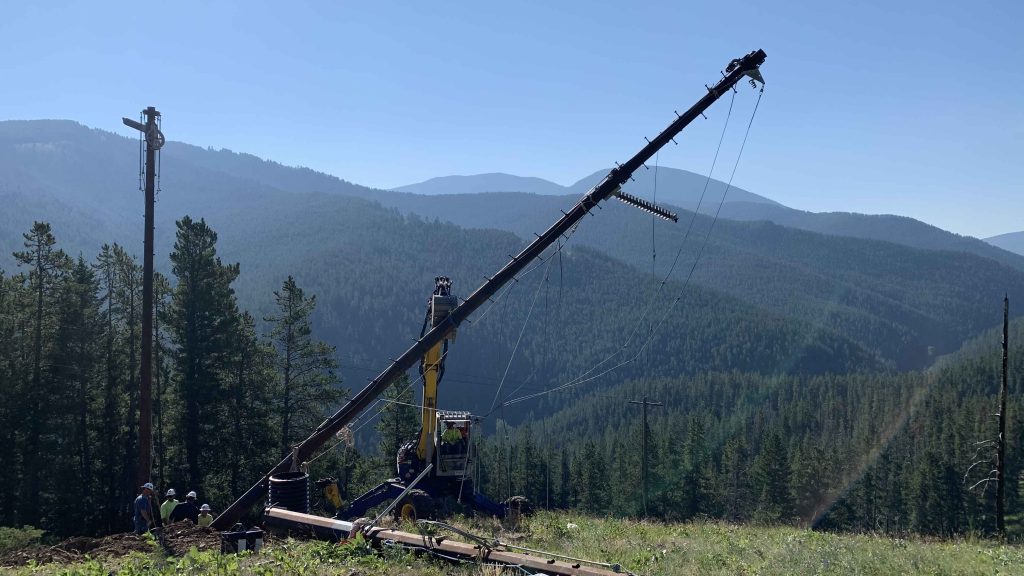In an era where so much relies on the health of our national power gird, power line maintenance and modernization are paramount. Historically reliant on manual labor and heavy machinery, this sector has faced challenges such as inaccessibility, environmental impact, and cost related to its infrastructure. But today, the introduction of spider excavators is revolutionizing the field.
Spider excavators, also known as walking excavators, are game changers for the power industry. Their multi-jointed legs offer exceptional stability. This versatility extends to various tasks, including vegetation management, installation of slope stability systems, pole installation, and inspections. With this advanced technology, it usually takes operators 1 to 2 years of training to operate spider excavators in challenging terrain. Their advanced control systems allow for accurate, efficient operations, including remote operation and automation.




With experienced operators, spider excavators offer a unique blend of mobility and stability. These machines can traverse virtually any terrain, from steep slopes to muddy swamps, and can easily navigate dense forests. The legs can be individually adjusted, providing stability that traditional wheeled or tracked vehicles can't match on uneven ground.
This versatility extends to the tasks they can perform. Equipped with specialized hydraulic attachments, spider excavators can tackle a wide range of maintenance jobs. They have proven their adaptability in various challenging scenarios, including:

Their low ground pressure minimizes soil compaction and disturbance, which is especially important in sensitive environments. This preserves ecosystems and reduces the long-term impact on soil health and vegetation growth.
Safety is a top priority in the power line maintenance industry. The inaccessibility of power lines in remote or other challenging locations has historically presented risks to maintenance crews, especially with lines that were built over 50 years ago. Spider excavators and experienced operators address this concern by enabling access to hard-to-reach areas while minimizing the dangers of steep slopes or uneven terrain, significantly increasing job site safety.
Their stability and sophisticated control systems contribute to a safer work environment. Operators can maneuver spider excavators with precision, reducing the likelihood of accidents or incidents that could lead to power outages or harm to workers. Decision-makers should prioritize the safety benefits of spider excavators when evaluating their adoption.
Spider excavators are renowned for their efficiency. Experienced operators have the ability to perform tasks in challenging terrain, reducing downtime and increasing the overall efficiency of maintenance operations. By streamlining the process, spider excavators help utility companies save time and money in the long run. In the power industry, where minimizing service disruptions and optimizing resource utilization are paramount, the efficiency gains offered by spider excavators are a significant advantage.
To illustrate the real-world impact of spider excavators in power line maintenance, let's examine a few case studies, emphasizing the technical aspects that decision-makers would find relevant.
Spider Excavators in Powerline Reconstruction After California Wildfires
In the wake of the devastating 2021 California wildfire season, which consumed over 2.5 million acres and thousands of structures, a critical powerline reconstruction project was initiated to enhance the resilience of the power grid. The primary goal was to replace wooden utility poles with metal ones to reduce the risk of future wildfires. This case study highlights the utilization of spider excavators to achieve faster, greener, and safer results in this challenging endeavor.
Access Limited Construction’s innovative approach involved using spider excavators and in-house spider operators for culvert excavation and guy-wire anchor installation and testing. This innovation reduced the project timeline by 13 months, benefiting the client and minimizing environmental disruption.
100 KV Transmission Line Rebuild
The 100 KV Transmission Line rebuild in the remote mountains of Montana presented unique logistical challenges due to its isolated location, rugged terrain, and limited access. The spider excavator's speed and efficiency were instrumental in overcoming the remote location's challenges. Access Limited’s experienced spider operators swiftly removed old wood H-frame structures, accelerating construction and saving almost a year on the project timeline. Contrasting with hand digging, which requires a larger workforce, helicopters, and poses significant safety risks, the spider excavator offered a safer and more efficient alternative.
These case studies highlight spider excavators’ speed, efficiency, and minimal environmental impact, allowing the industry to set new standards for sustainable construction practices and enhance safety.




As the energy landscape evolves, so does the field of power line modernization to meet today’s power needs. Spider excavators play a pivotal role in shaping the future of this industry, and their continued technical advancements are key considerations.
When looking for a service partner with spider capabilities, utility decision-makers should include the company’s dedication to safety and their investments in training their spider excavator operators. At Access Limited Construction, they have a spider training facility that allows them to provide benchmarks of each of their operators to ensure their skills match the challenging projects the spider excavators thrive in. This helps refine skills, significantly improving job site safety and increasing overall efficiencies. Moreover, decision-makers should stay updated on technological advancements, align with sustainability goals, and engage in industry collaborations for a transformative future in power line maintenance.
The adoption of spider excavators represents a significant step forward in the power line maintenance industry, offering innovative solutions to long-standing challenges. As utility companies continue to embrace this technology, they can anticipate improved operational efficiency, reduced environmental impact, and enhanced safety, ultimately leading to more reliable power distribution networks for the communities they serve.